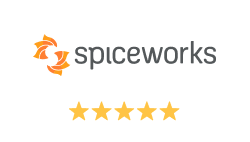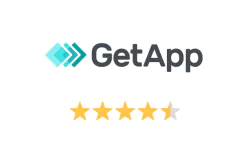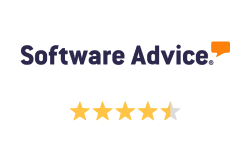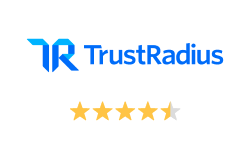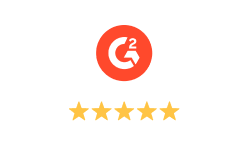Professional services automation (PSA) and remote monitoring and management (RMM) systems are synonymous with IT services. RMM and PSA platforms automate business processes in IT services delivery operations. Most service providers deploy RMM and PSA as cloud-based SaaS applications offered by third-party vendors. And while some MSPs use both RMM and PSA tools, others may prefer one over the other.
RMM vs. PSA, which is better? Well, this is a bit more complicated than a “versus” situation. RMM and PSA software applications are not technically interchangeable—each serves a different purpose from the other. Choosing between the two comes down to what your business needs. Many MSPs actually deploy and run both RMM and PSA tools simultaneously.
This article looks into how RMM and PSA processes work and when you should ideally use one or the other or a combination of both.
What is PSA?
PSA software is somewhat similar to an ERP system. It integrates across the entire business and gives the MSP total visibility into all business processes. PSA helps automate and optimize internal business operations such as:
- Project lifecycle management
- Financial and logistics planning
- HR management
- Sales and marketing
- Documentation and reporting
- Bookkeeping and accounting
- Service pricing and billing
- Resource planning
- Ticket processing
- Customer experience management
Think of PSA as a specially designed ERP for professional service providers. This means it can track and consolidate several data points from multiple projects, clients, and processes unique to the business.
What is RMM?
RMM software is an essential MSP tool for gathering information and accessing remote endpoints, servers, and networks in order to assess their health and perform IT management tasks on them. This is essentially how most MSPs get their job done. Advanced RMMs even automate mundane and repetitive tasks, lightening the MSP’s workload. Here are the main uses and features of a typical RMM system:
- Discover and keep and a live inventory of all devices on a network
- Remote software deployment
- Track and report system health and performance status
- Continuous real-time monitoring of IT assets
- Failure and cyber incident alerting, resolution, and reporting
- Automated patch management and software updates deployment
- Automated routine IT management
- Remote access to systems’ usage and security configurations and policies
A robust RMM system is arguably the most useful tool in an MSP’s arsenal. It sits at the core of IT services delivery operations, bridging the gap between the MSP and the numerous IT infrastructures they manage. Without an RMM system, it would be impractical and expensive, if not impossible, to regularly visit all the different managed IT sites just for routine checkups and maintenance.
When to use PSA
PSA software is an internally facing system designed to manage the business side of the MSP enterprise. A PSA solution is purpose-built to facilitate optimal workflows and business management.
The alternative to PSA is handling all the business management processes manually through an assortment of spreadsheets and ERPs. Another option is to outsource the individual tasks to third-party professionals. For instance, you could outsource financial management to an accounting firm or HR to a staffing agency. But doing so would be impractical and could quickly get out of hand. However, small MSP firms and start-ups might get by without an elaborate PSA system. For MSPs with an extensive and growing portfolio, an integrated PSA solution is a crucial necessity.
When to use RMM
RMM software facilitates the day-to-day MSP operations. It works as a service delivery pipeline, connecting the client’s infrastructure to the managed service. MSPs offering anything more sophisticated than break-fix support need some level of remote monitoring and management capabilities.
Like with PSA, the scope of RMM deployment depends on the scale of the business. You can deploy specific RMM tools depending on your managed offering. For instance, if your MSP offers endpoint management, then you’ll need an RMM solution capable of handling remote software installation, patching, updating, and reconfiguration.
Using both RMM and PSA
Although IT PSA and RMM tools perform different functions, some of those functions do overlap. Plus, the two systems can complement each other because each solution is useful in its own way. For instance, you can’t run HR or financial management on RMM software, and PSA software can’t handle remote IT tasks either. So, in any case, an MSP managing diverse IT infrastructures for several different clients definitely needs to run both PSA and RMM solutions concurrently.
The ideal scenario for this is where RMM is integrated with PSA into a single platform. An integrated system enables you to seamlessly manage the MSP’s business and operations on a single pane of glass. But this is not always possible since not all RMM and PSA software are inter-compatible. That said, an integrated system may not necessarily work for every MSP business model. Some MSPs might prefer to keep the business and operations sides of the enterprise separate.
If you are looking to streamline your IT management processes, Action1 has your back. Our robust cloud-based endpoint management software for MSPs includes an automated patch management system, software deployment tools, an IT inventory management system, and more. Action1 gives you exceptional control, flexibility, and security in managing multiple endpoints and servers. Get started with Action1 free MSP tools for 200 endpoints with no hidden costs, ads, or expiration dates, and scale up whenever you are ready.
